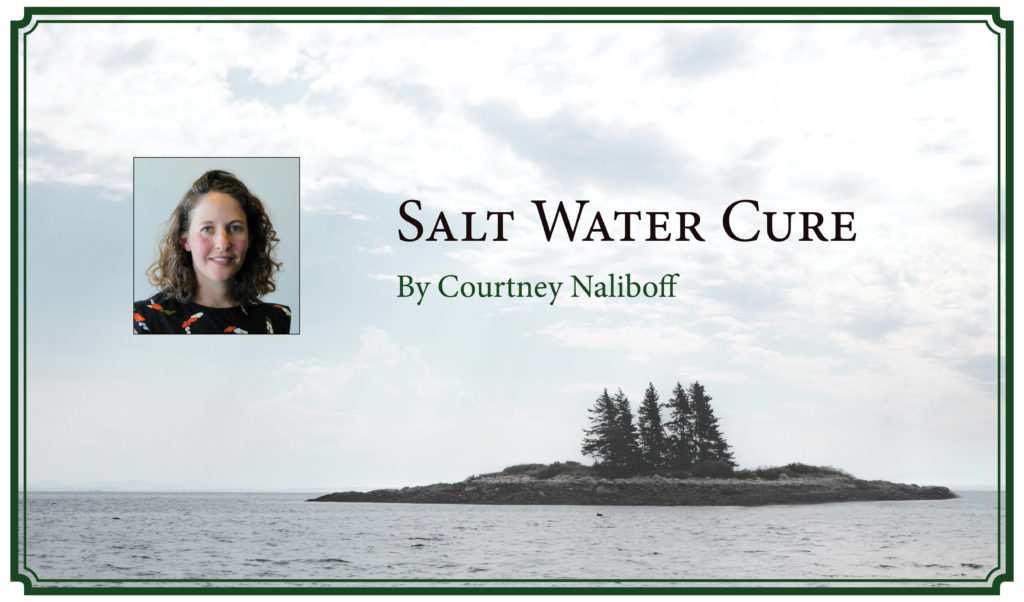By Courtney Naliboff
As an island teacher, it is often my duty and pleasure, and that of my colleagues, to take students off-island overnight. We do it for basketball games, we do it for rowing races, we do it for theater festivals. As wonderful as the island is, and as many experiences there are to mine here, some things can only be found “in America,” as we say.
This year, our high school students have been exploring themes connected to the minke whale, whose skeleton continues to come together in our projects building. This fall they all read In the Heart of the Sea: The Tragedy of the Whaleship Essex, Nathaniel Philbrick’s epic nonfiction narrative about the shipwreck that inspired Moby Dick.
In art class, some studied scrimshaw and carved their own version in bars of soap. They learned how to carve a timber frame at the Shelter Institute, which will be used to display the completed minke, and they participated in the Chewonki Fins and Flippers program.
Visiting artist Bennett Konesni had the students rowing and singing traditional work songs that would have been used on whalers to keep the sailors working in tandem to haul a mast or row a whaleboat. Playwright and performer Michael Gorman brought a scaled-down version of Chasing the New White Whale, his parable of whaling as a metaphor for opioid addiction, which involved students as performers.
And in science classes, students studied whale evolution and anatomy, and continued the nitty-gritty work of cleaning and assembling the skeleton. Dan DenDanto, an expert in whale skeleton assembly, has visited regularly and was most recently seen in early May guiding students, staff, and community members in the task of sliding vertebrae onto a metal armature and holding them in place with spray foam insulation, epoxy, and sculpting clay.
The work continues, but to help bring all of the threads together, we arranged a trip to the New Bedford Whaling Museum. Three staff members and seven of our 11 high school students drove the four-and-a-half hours to New Bedford on May 1.
When we arrived in the early afternoon, tickets in hand, we were immediately awed by the four articulated whale skeletons hanging in the lobby. A female right whale and her fetus, assembled by Dan DenDanto, swam through the air next to a 66-foot-long male blue whale, who kept company with a humpback.
A full-scale model of a blue whale heart immediately drew the students in and they crawled through, snapping photos of each other and laughing.
The students, guided by our science teacher, Lisa White, immediately began to observe and critique the skeletons hanging above them. They noticed that the blue whale was oozing oil from his bones, and that a clear plastic plate had been hung under the mandible to catch as much as possible. A sperm whale skeleton was at the center of the next room, and they documented and discussed the hardware used to suspend it.
The museum, which I have been fond of for decades, does an outstanding job of bringing together the various threads that connect the topic “whaling” to nearly any subject a student could study. From the fine arts, represented by a room full of scrimshaw, Japanese watercolors depicting whaling tools and whale anatomy, and gorgeous jewelry collected from indigenous communities contacted by whalers, to social studies, with extensive displays connecting colonialism and whaling and emancipation and whaling, and artifacts and documentation of indigenous whaling communities, to the sciences, with exploration of whale conservation efforts, whale sounds, and of course whale anatomy, the museum exemplifies the cross-curricular model we’re growing towards executing at North Haven Community School.
Any rich subject can be an entry point to learning skills and content across classrooms. Tying content to a theme can also help students see the global connections and purpose for learning the material. As our school moves forward with personal learning plans and opportunities to interface with content and skills in a variety of ways, the New Bedford Whaling Museum’s lessons are an inspiration to staff and students alike.
Courtney Naliboff teaches music and theater at North Haven Community School.





